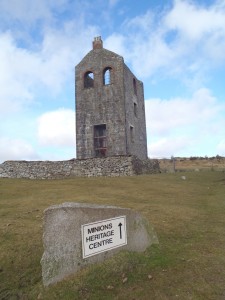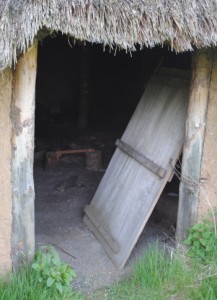In his book ‘Heritage: Critical Approaches’ (2013), Rodney Harrison calls for society to take more consideration of how we can de-commission ‘heritage’. Arguing that ‘we live in a world in which heritage is ubiquitous’ Harrison is concerned with all the piling up of heterogeneous items, traces and practices of the past in the present. Connecting this to the contemporary value systems that govern conservation agendas, he suggests that we are at risk of being ‘overwhelmed by memory’. This is very dramatic language, but perhaps we do need to think about how we can ‘prune’ some elements of heritage? There is, perhaps, too much of it about – but how should we make decisions?
This issue can be approached from at least two perspectives: First, as Harrison himself notes, we should recognise that (drawing on Mark Augé) forgetting is a necessary form of cultural production. So that while we might place a lot of emphasis on remembering and memorialising events and phenomena that have ‘social value’, we should not necessarily be sad or worry about to forgetting things that are ‘irrelevant’. In other words, we need to think sustainably and sensibly about the pasts we produce in the present for the future. Of course, this decision-making process should not be focussed on preserving and protecting ‘the best examples’, but by recognising and thinking about issues of power and equality. And this leads me to consider the second approach towards deciding what sort of heritage to maintain and what to let go – allowing ‘the market’ to decide.
Allowing ‘the market’ to decide what is preserved and protected seems to be an increasingly common method of dealing with the issue; and one which is an honest reflection of the Neoliberal world that we live in, whether you agree with the outcome or not.
There are many heritage centres and museums that are cutting their work force, opening hours and attractions, and are increasingly reliant on voluntary labour. Having gone through a period of ‘expansion’, as Heritage Lottery Funds, EU monies and other State-led grants allowed for a relatively positive environment for the celebration and marking of all sorts of heritage, we are now in an era of austerity.
As ‘austerity’ kicks in, the ‘market-led’ approach to preservation decisions is something that is increasingly clear. Optimistic visitor projections have come back to haunt several sites, leading to an increasing category of ‘ex-heritage sites’, representative of a sort of ‘heritage of austerity’; the heritage of decaying heritage; obsolete, due to market pressures. This is certainly something that crossed my mind last week when I visited the Minions Mine Heritage Centre, in the small village on Minions, high up on Bodmin Moor.
Although the website reported that it should be open at 10am, the site was boarded up and clearly closed when we visited. A plaque on the wall celebrated the building of the original mine engine house in 1881 (at a time when the Cornish mining industry was already in decline); and its refurbishment in 1991, with a grant from the Rural Development Commission. I checked up on further websites when I got home, however, and found that the closure is only temporary – brought on by the need to replace some rotten lintels, it should be open by the Summer.
While this heritage centre was not permanently closed, however, the situation still turns our attention towards the wider issue of how to deal with the ‘heritage of heritage’: the recognition that heritage-related decisions, processes and practices, themselves, have a recognisable ‘heritage’.
In 1997, The Archaeolink Prehistory Park at Oyne, in Aberdeenshire, was hailed as a flagship attraction. Aberdeenshire Council was forced to take control of the prehistory park in 2005 after spending £1.5 million of taxpayers’ money in a bid to keep the centre afloat as its visitor numbers, originally projected at 100,000 a year, plunged to just over 19,000. The park finally closed its doors in February, 2011. (See article in the Scotsman for details: http://www.scotsman.com/news/scotland/top-stories/aberdeenshire-council-to-pull-plug-on-archaeolink-1-2948032). There are a few blog sites that have recorded the slow demise of this heritage theme park: for instance, see the ‘Heritagelandscapecreativity’ blog for August 2013, which has some excellent photos: (https://heritagelandscapecreativity.wordpress.com/tag/archaeolink-prehistory-park/).
In many ways, this now corresponds to an exploration of the ‘heritage’ of the early 21st century ‘heritage industry’; one that reflects both the choices and funding regimes that permitted the park to open in the late 1990s, as well as the political-economic context that faces such heritage sites today. It strikes me that this ‘heritage of austerity’ is not something that should be swept under the carpet, in an attempt to air-brush out the political decisions that are being made about what is deemed fundable. And it should also be challenged, in a manner that goes beyond the slightly ironic – slightly dramatic realms of ‘urban exploration’ at such sites. Once more, we must be prompted to look towards issues of power and equality – in how sites get funded; what sorts of heritage get chosen to be preserved in a state of ‘managed obsolescence’ as a ‘heritage-ruin’ – or abandoned to become ‘ruined heritage’ of an obsolete past.


